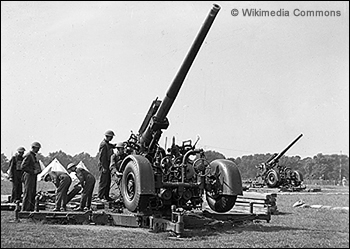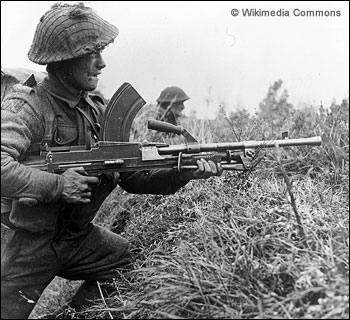I was called up for military service in 1942, shortly after my 18th birthday. Many of my school friends likewise went into the forces. I didn’t particularly want to go as I had only just started work and wanted to get on with my career. Having been given the option, I asked for the navy and naturally was directed to an infantry regiment and during training found it quite an exciting (boring at times) life.

I enjoyed unarmed combat sessions (makes judo seem very ladylike) and the stripping and re-assembly of various weapons. Stripping and re-assembling a Bren gun took 25 minutes. It was good fun on the firing ranges too, where we used all sorts of small arms, mortars and grenades. Square-bashing was a bit of a bore but had its uses. I guess it built our characters.
My abiding memory of the initial few months of training is of assault courses. I and many others never completed the earlier ones, but were collected, exhausted at various stages along the five-mile course and transported back to our billets in the back of a Bedford three-tonner (the first motor vehicle I learned to drive).
I cannot recall any other time in my life being so flaked-out and, on the first occasion, collapsed on my bunk and slept with my boots on. On my first leave I checked to see how much weight I had lost and found it had increased by about 10lb.

The first deaths I witnessed during the war were not due to enemy action but accidental. The first was during an exercise. A dispatch rider cut in front of our truck, came off his motor bike and had his head run over. The next was during an air-raid over southern England. On recoil, the breech-block broke off our gun and knocked a chunk out of the concrete emplacement. No 5, the rammer, was standing in its path. There were plenty of deaths from enemy action later and what I mostly remember is the appalling smell that arises from freshly shredded bodies.
I suppose it was fortunate for me that at the time they were short of anti-aircraft gunners so I had the opportunity to transfer to an artillery regiment, and found myself part of the team manning a 3.7” heavy anti-aircraft gun and twin Lewis machine guns – the latter later to be replaced by Bren guns. It took 10 men to man a 3.7” AA gun (which weighed about 10 tons) and the Lewis, all of which were in an emplacement surrounded by thick concrete walls. There were eight gun emplacements on the site. When all were in action, the noise was indescribable and we had no ear protectors in those days.
Each gun could put up six to eight shells a minute and we could keep going for about 15 or 20 minutes. A shell and case weighed about 25k, or 56lbs, so the loaders, rammer and the men who shifted them from the magazine to the guns needed to be robust. The 3.7” referred to the bore of the gun barrel which, as far as I remember, was 16 ft long and had to be cleaned after an action. Sometimes we were strafed by low-flying enemy aircraft which was when the machine guns came in handy. It was not uncommon for men to wet themselves (or worse), particularly if incoming bullets ricocheted off a hard surface.
I said ‘fortunate’ to be transferred to the HAA as several of my friends, some of them from schooldays, who were in other branches of the services, were sent overseas and died there. My particular pal, Tony (we were at school together), was a tail-gunner in a Lancaster. He survived the war but as an alcoholic – and subsequently died of cirrhosis of the liver. When called up he was a happy-go-lucky tea-totaller. Vic S. was a prisoner of the Japs. He survived the war but broken in health. Cliff, brother of my girlfriend at the time, died on the Normandy beaches on D-Day.
My two brothers also survived the war. Both older than me; one in the navy and the other a medic in the air force. The former was a commander on a cruiser and helped sink the French navy at Dakar, whilst the other told me that sometimes casualties had to be removed from shot-up bombers with a hose, particularly ‘tail-end Charlies’. They both died peacefully, aged 83, in 1995 and 2002 respectively.
Len of the Chilterns
© Len of the Chilterns 2010